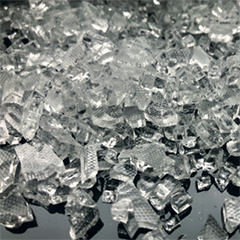Loser Chemie GmbH (LC), a chemical plant from Saxony, acquired parts of the former Solarworld AG, an internal recycling site, to launch recycling over the whole photovoltaic value chain. LC are now in a position to close material cycles for the photovoltaic industry, by exploiting all existing synergies.
There is an invisible tidal wave looming of EOL-PV modules from homeowners and power plants, because this amount will not show up for the next >20 years. That’s the expectation, but is not reality. It is not enough to move a graphic for installation forecasts by 25 years because it is assumed that the modules work for 25 years. It is known that demand side participants bought lower grade B or C modules at lower price despite visible defects. This and many other reasons explain the increased demand for recycling we observe.
Apparently photovoltaic modules that have been installed for ten years or less are beginning to fail, showing delamination, hot spots, disconnected cells, etc. The panels’ efficiency has also changed over time and manufacturers have exited the market. It means that replacing of defective modules may not be a seamless process even with warranties honored.
The need to address end-of-life issues early in the design stage of product development is also clearly illustrated by the history of the electronics industry. We cannot afford to wait for the inevitable tidal wave of PV waste before we begin to address this problem and we have to handle enough scrap for now.
For years, Loser Chemie GmbH in Freiberg, has been regarded as a very creative company in the field of environmental technologies. Since 2011, the company has been continuously nominated for its projects that address resource conservation and green technologies. This year, for the second time, the company has won the coveted prize. This time it was for its Aqualux project, which uses water-jet technology to break down silicon-based photovoltaic modules into their individual parts, thereby revealing new recycling paths.



























